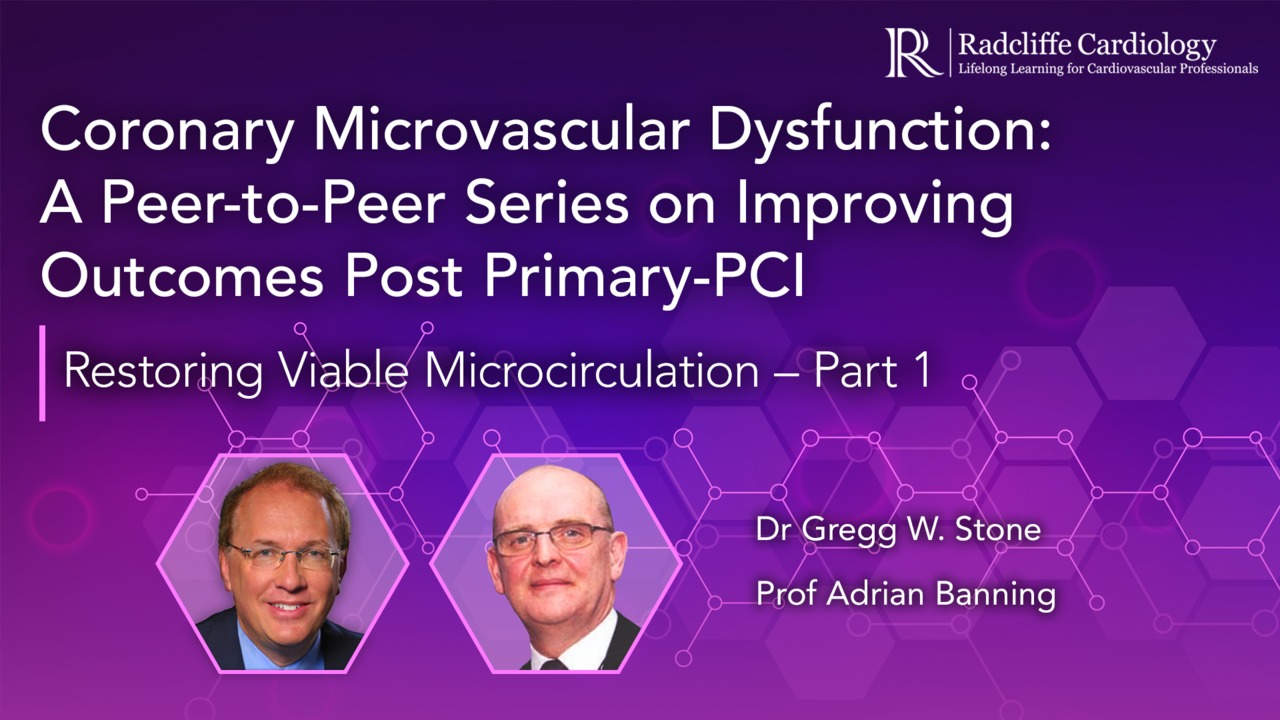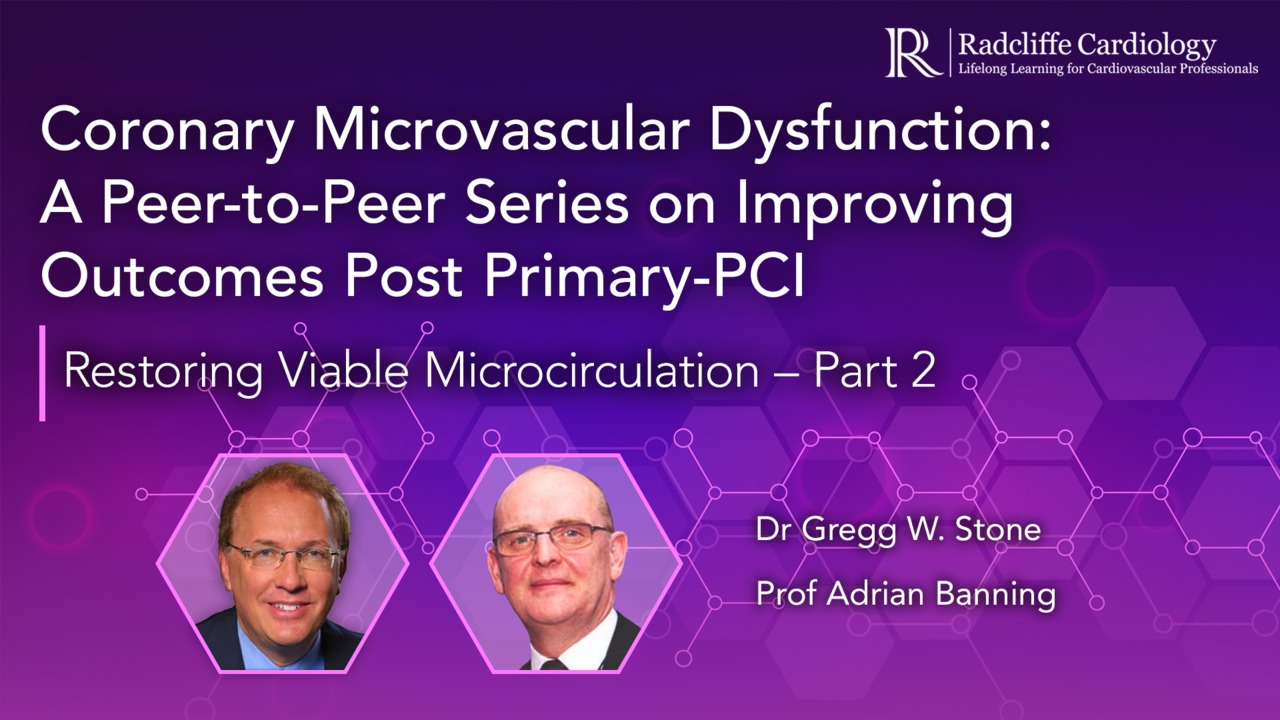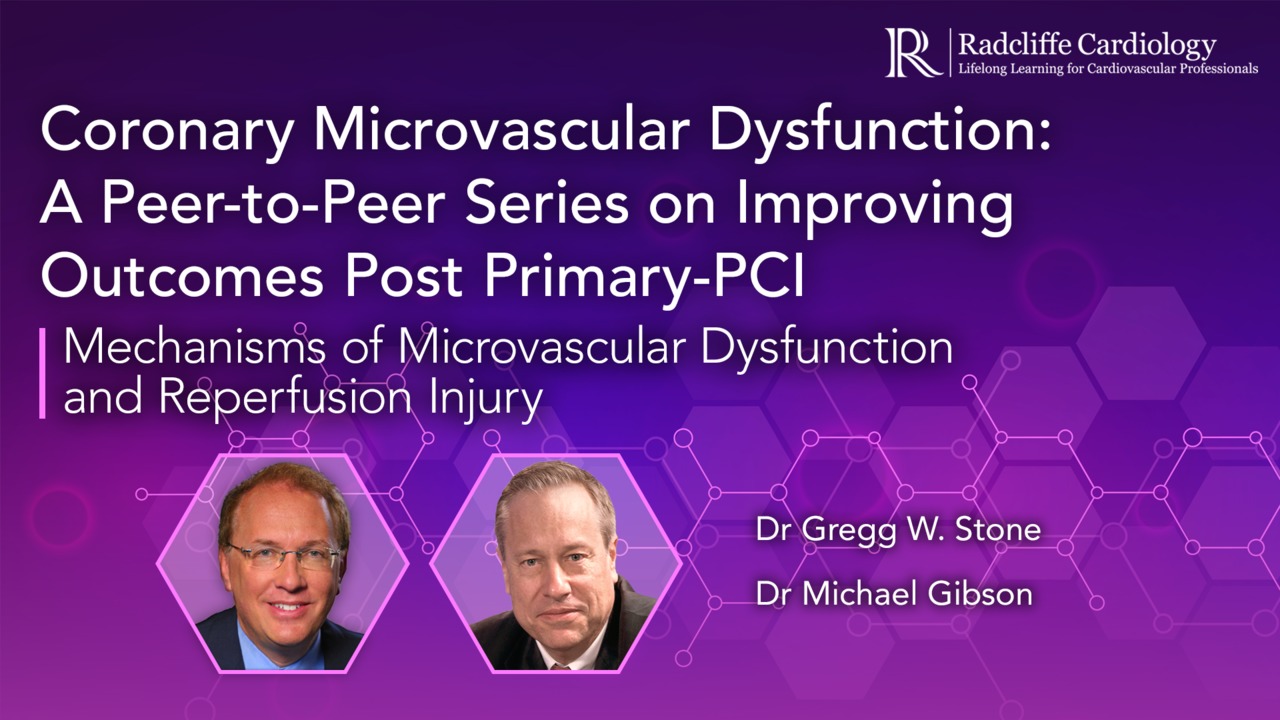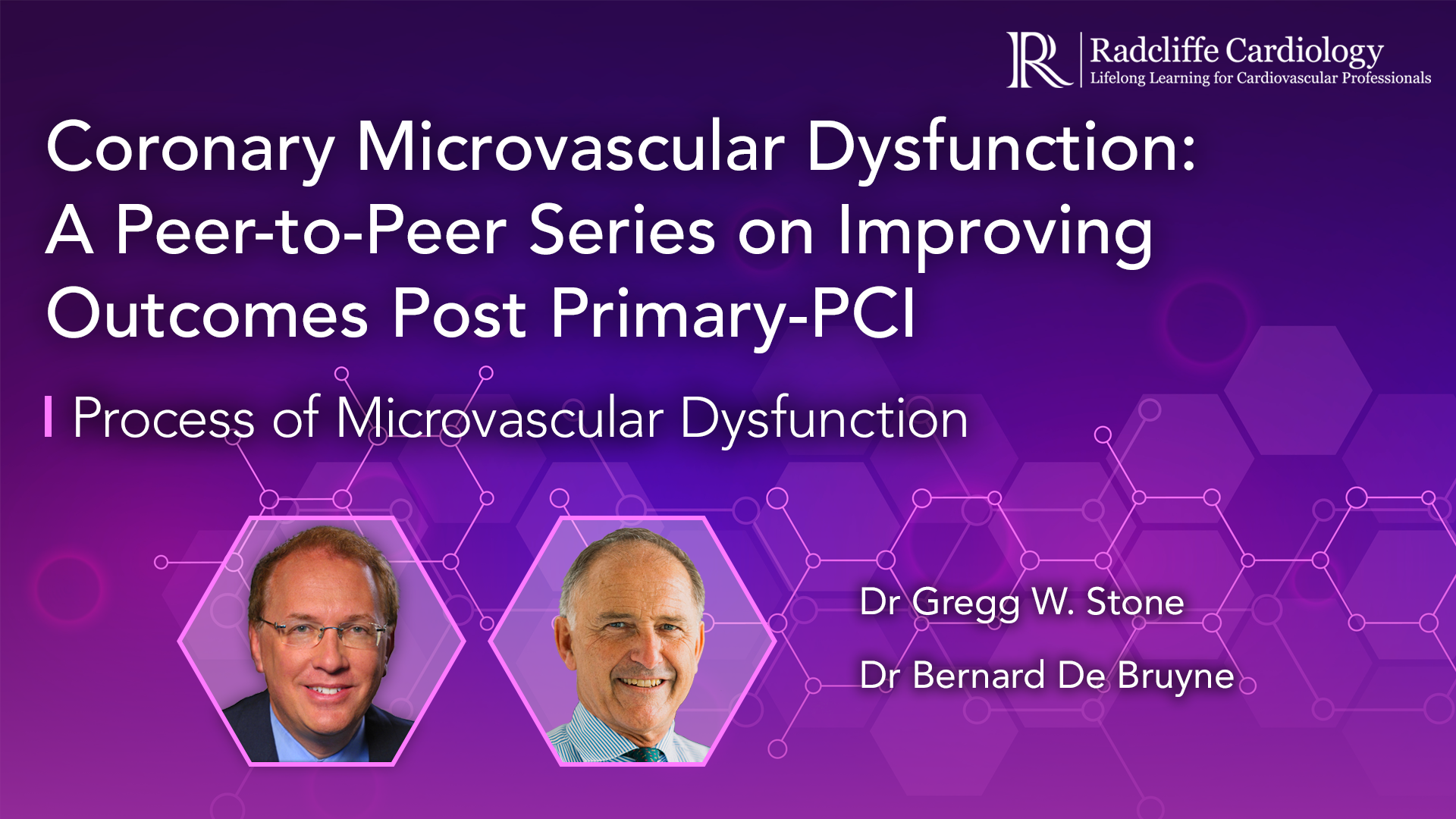Coronary Microvascular Dysfunction: A Peer-to-Peer Series on Improving Outcomes Post Primary-PCI
Published: 16 August 2021
-
Views:
 28495
28495
-
Likes:
 7
7
-
Views:
 28495
28495
-
Likes:
 7
7
-
 5m 37sPart 4 | Session 1 Restoring Viable Microcirculation — Part A
5m 37sPart 4 | Session 1 Restoring Viable Microcirculation — Part A -
 8m 43sPart 4 | Session 2 Restoring Viable Microcirculation — Part B
8m 43sPart 4 | Session 2 Restoring Viable Microcirculation — Part B
-
 6m 9sPart 5 Evaluating Prognosis
6m 9sPart 5 Evaluating Prognosis
-
 6m 7sPart 1 | Session 1 Morbidity of Patients Post AMI/STEMI — Part A Gregg Stone, Colin Berry
6m 7sPart 1 | Session 1 Morbidity of Patients Post AMI/STEMI — Part A Gregg Stone, Colin Berry
Overview
This peer-to-peer series is dedicated to evaluating microvascular dysfunction following myocardial infarction – an important cause of mortality and morbidity post primary-PCI.
Although epicardial coronary blood flow is restored after almost all PCI procedures, perfusion of the coronary microvasculature is not fully restored in approximately half of patients. In this series of bitesize interviews, Prof Gregg Stone (Professor of Medicine, Professor of Population Health Sciences and Policy, and Director of Academic Affairs, Mount Sinai) examines this unmet need with help from a celebrated faculty of experts. Together, they will be covering everything from pathophysiology of microvascular dysfunction to current approaches to restoring microvascular perfusion post primary-PCI.
These shorter videos are ideal for those who are time-poor, or prefer to consume their education in short chunks. Don’t miss this unique overview from some of the world’s leading experts.
References
Cohen M, Boiangiu C, Abidi M. Therapy for ST-segment elevation myocardial infarction patients who present late or are ineligible for reperfusion therapy. J Am Coll Cardiol 2010;55:1895–1906.

Key Learning Objectives
- Recall residual mortality and morbidity associated with infarct size and microvascular dysfunction following AMI/STEMI
- Describe the relationship between infarct size, microvascular dysfunction and long-term outcomes AMI/STEMI patients
- Describe the pathological processes underlying microvascular dysfunction following AMI/STEMI
- List the clinical presentation features, biomarkers and imaging parameters associated with microvascular obstruction following AMI/STEMI
- Select suitable management approaches for minimising infarct size and microvascular damage in individuals requiring reperfusion
Target Audience
- Interventional Cardiologists
- General Cardiologists
- Imaging Specialists
More from this programme
Part 1
Morbidity of Patients Post AMI/STEMI
Part 2
Microcirculation and Microvascular Obstruction Post AMI/STEMI and its Relation to Infarct Size
Part 3
Mechanisms of Microvascular Dysfunction and Reperfusion Injury
Part 4
Current Approaches for Restoring Viable Microcirculation
Part 5
Process of Microvascular Dysfunction
| 1 session | |
| Evaluating Prognosis | Watch now |
Part 6
Process of Microvascular Dysfunction
Faculty Biographies

Gregg Stone
Professor of Medicine, Professor of Population Health Sciences and Policy, and Director of Academic Affairs
Dr Stone is a leading expert in interventional cardiology and is one of the most widely cited researchers in science. He has served as the principal investigator for approximately 130 national and international multicentre randomised trials, has delivered thousands of lectures internationally, and has authored more than 2,500 book chapters, manuscripts and abstracts published in peer-reviewed literature.
Dr Stone is the Director of Academic Affairs for Mount Sinai Heart Health System, and Professor of Medicine and Professor of Population Health Sciences and Policy at The Zena and Michael A Wiener Cardiovascular Institute, Icahn School of Medicine, at Mount Sinai, New York.
Dr Gregg Stone is an editorial board member of Interventional Cardiology: Reviews, Research, Resources (ICR3).









